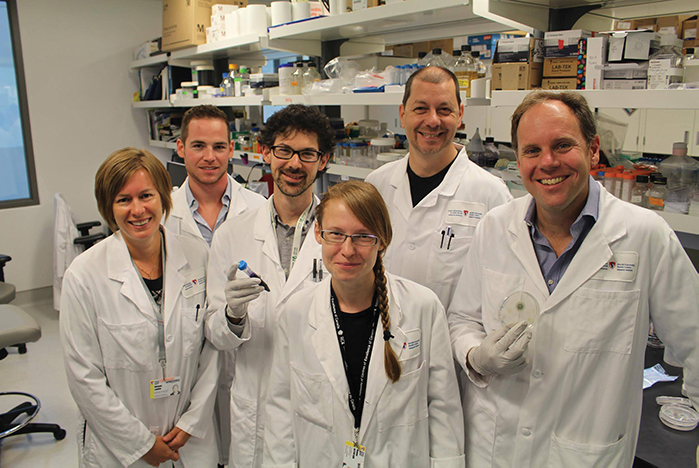A group of McGill scientists were recognized for their cutting-edge research, an example of innovation at its finest.
“Innovations are the solutions that no one else would think of,” Don Sheppard, professor of microbiology and immunology and researcher, told The McGill Tribune.
Québec Science Magazine recently recognized Sheppard and his team for their revolutionary work on biofilms, following a study they published in June 2017. They are one of three McGill-affiliated research teams to be recognized in the magazine’s “Les 10 découvertes de l’année,” a comprehensive list of the top 10 scientific discoveries of 2017. Sheppard’s team developed a mechanism in which the enzymes used to build biofilms can be reversed upon themselves, producing a self-sabotaging system in which the biofilm destroys itself.
Biofilms are glue-like membranes that exist around populations of microbes, collectively creating a thick layer of slime that is difficult to treat or remove with antibiotics. Many common health issues, such as urinary tract infections, Crohn’s disease, and even dental plaque can be made worse by biofilms.
Biofilms are found everywhere: They make up the mucous layer of lung tissue, and can form in the tissues of post-operative surgical patients, which may further complicate already strenuous and delicate procedures.
For years, biofilms have been virtually untreatable as they do not respond to antibiotics or physical removal. Sheppard’s research may circumvent this problem.
“This [mechanism] turns the problem at 90 degrees,” Sheppard said. “We are not harming the bug at all with our therapy. Instead, we are attacking a structure that the bug makes, we are attacking this biofilm, this wall around the city that the organism makes.”
He refers to the enzymes that compose biofilms as “saws”—tools used to build a wall around bacteria. Sheppard’s mechanism strips the enzymes of their safety features, allowing the enzymatic process to work opposingly, thereby taking apart the biofilms with the same tools used to build them.
Sheppard’s research represents a turning point in the way that medical professionals may tackle the problems presented by biofilms in the effective treatment of patients. The new method’s importance goes beyond its medical implications.
“I believe that the ramifications of this discovery are enormous,” Brendan Snarr, a PhD candidate in the Department of Microbiology and Immunology, wrote in an email to The McGill Tribune. “It is suspected that almost all microbes can live in some form of biofilm in the environment, so to have a technology to degrade them could have applications across many fields.”
This technology has potential uses across multiple disciplines, from the health sciences to manufacturing and agriculture. The team has high hopes that this technology will become available for commercial therapeutic use within the next five years, and are currently working toward generating the required data to begin a clinical trial in humans.
McGill microbiologists worked alongside Dr. Lynne Howell, a researcher in Molecular Medicine at The Hospital for Sick Children in Toronto. Howell, who specializes in the mechanics of enzymatic function, worked alongside Sheppard and Snarr to create an interdisciplinary answer to the problem.
“This is a great example of the success of interdisciplinary science,” Sheppard said. “We take a group like mine, along with myself, […] an infectious disease doctor, and marry it with a research lab focused on the structure and the function of individual proteins and enzymes.”
Together, in what can only be described as a perfect pairing of immunology and biochemistry, two teams of doctors studying vastly different fields have come together to, in Sheppard’s words, create “A product [that] greatly exceeds the sum of the parts.”








